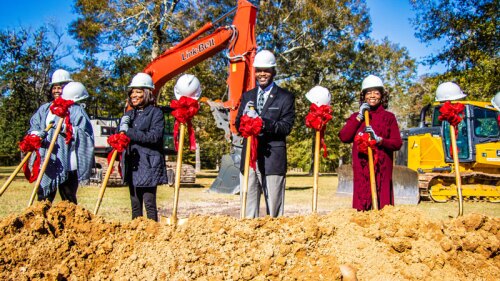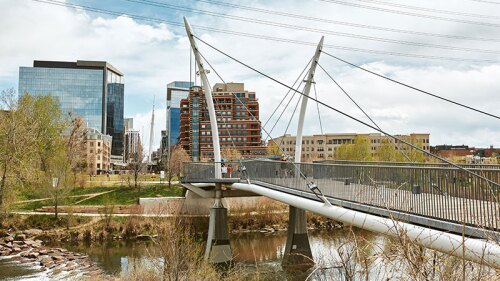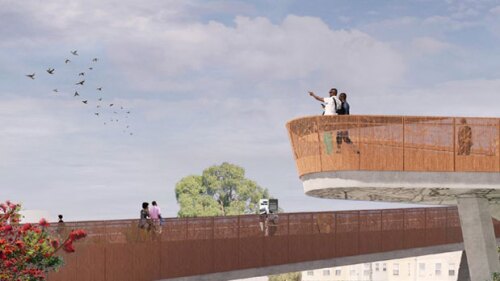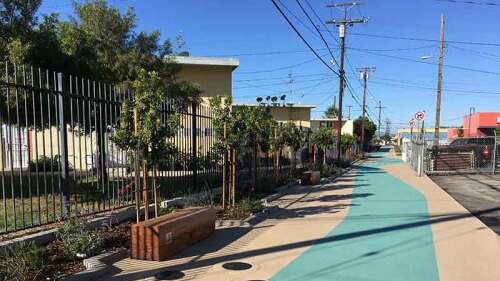When it comes to urban infrastructure—from bridges to transportation systems to master plans—architects impart a sense of place and a human scale. But equally important are basic structural capabilities. Wide, attractive sidewalks are of no use if adjacent streets are too narrow to carry traffic. The interplay between these values defines success, say both architects and engineers.
“Engineering is by definition objective and linear,” says Ronald A. Altoon, partner at Altoon + Porter Architects and new chair of Urban Land Institute Los Angeles. “Architecture is a holistic discipline, marrying art and science, and the only remaining Renaissance art. Its obligation is to translate capacity demand into human experience. It meets at the intersection of objective and subjective, prose and poetry, need and desire.”
Doug Suisman, principal with Suisman Urban Design—recently awarded “Best Master Plan” and “Future Project of the Year” by the World Architecture Festival in Barcelona for “the Arc,” a large infrastructure plan for a future Palestinian state—puts this dynamic differently.
“You can divide cities into paths and places. Places are where architects have worked, and paths are where the systems are. They create an exciting environment that is larger than any building,” he says. “The mantra in our office is: from the region to the hand rail. We are always cognizant of the larger regional systems, but never want to lose sight of the human scale represented by the hand rail. Everything is checked against the individual’s experience.”
Suisman cautions that architects should not shortchange engineers: “Think about the Brooklyn Bridge, where the engineer’s role is dominant. Or a concert hall, which is nothing without the acoustician.”
Artist Cliff Garten creates urban infrastructure. His towering illuminated sculptures, “Corridor of Light” in the Rosslyn neighborhood of Arlington County, Virginia, combine public-art master planning with sustainable values.
“Lighting the city involves tremendous energy use,” he says. “It was a challenge getting the lighting department to shift to LED. And it’s a funding issue. There are never enough public-art dollars to create on a large scale. So we created a partnership between the public-works and public-art departments, the Rosslyn business improvement district [BID], and Rosslyn Renaissance planning group. The BID especially wanted this project to change the image of the street to create better business, and it did. Rosslyn now has incredibly valuable real estate. The strategy is to think at the scale of the city and form partnerships.”
Deborah Weintraub works both sides of the interdepartmental fence. She is deputy city engineer and chief architect for the Los Angeles Department of Public Works, Bureau of Engineering, guiding several infrastructure projects in the city—including a huge redesign of Santa Monica Boulevard.
“Architects are brought into projects way too late,” she says. “We have isolated ourselves with aesthetic decisions. But when you talk about other issues—budgets, community relations—we should be there, too. We miss a lot of opportunities to make extraordinary places.”
Even the simplest of places benefit from this addition: “A retaining wall on Santa Monica Boulevard in Los Angeles came out well. Working with a consulting architect, we added textures and shapes that gave it visual interest and variety. It became more complicated and that caused some headaches. I spent a lot of time advocating this design change. But the result was outstanding. It has not been tagged [with graffiti] very much. When you do things well, they get respect.”
Even more optimistic is ULI’s Public Development and Infrastructure chairman David L. Winstead, Maryland’s former secretary of transportation. He sees progress reconciling engineering with architectural values. “There is a legacy of excellence guiding the design of public buildings and spaces for over two decades,” he says. “The Ronald Reagan Building in Washington, D.C., and the new San Francisco Federal Building are excellent examples of integrating public offices with high urban design and transit accessibility. Many state departments of transportation and regional transportation authorities are moving from strictly engineering solutions, to urban-design solutions with transportation access. The proposed Rapid Transit System in Montgomery County, Maryland, stands out, with pedestrian-friendly transit stations and integration into Washington’s Metrorail System.”





